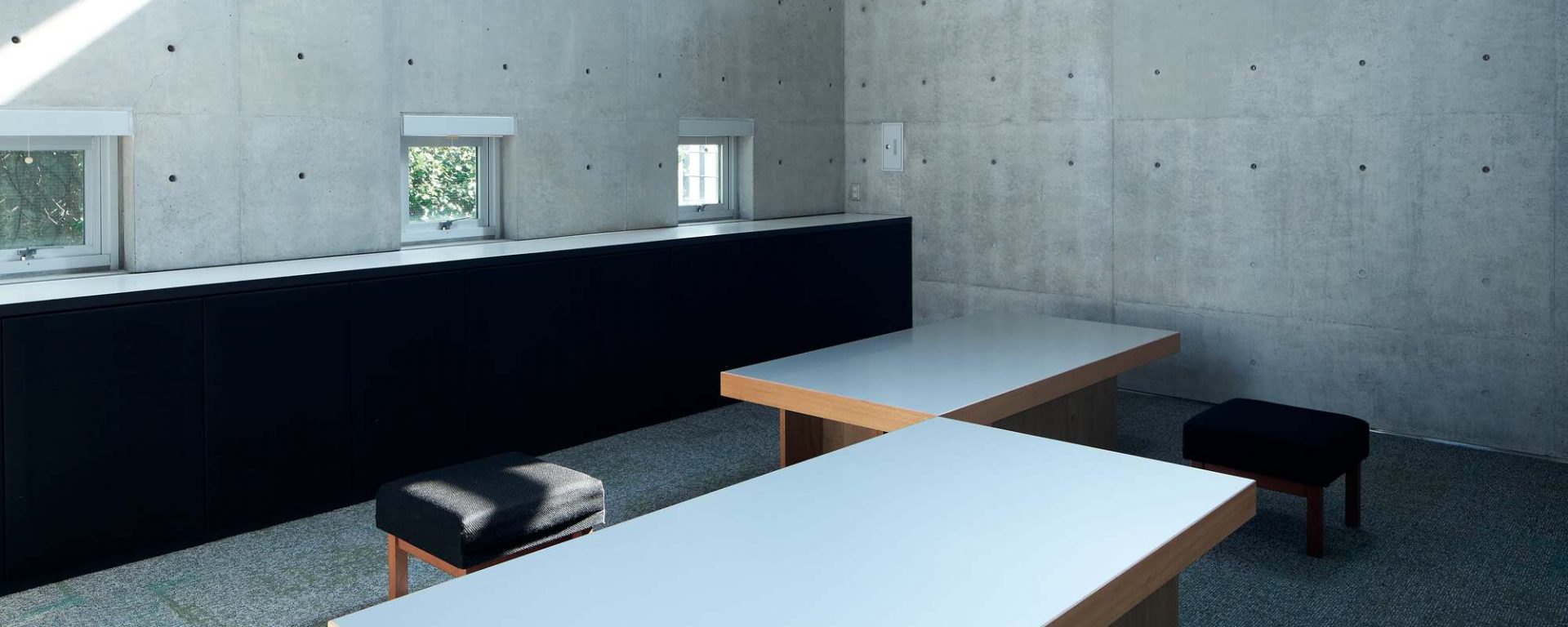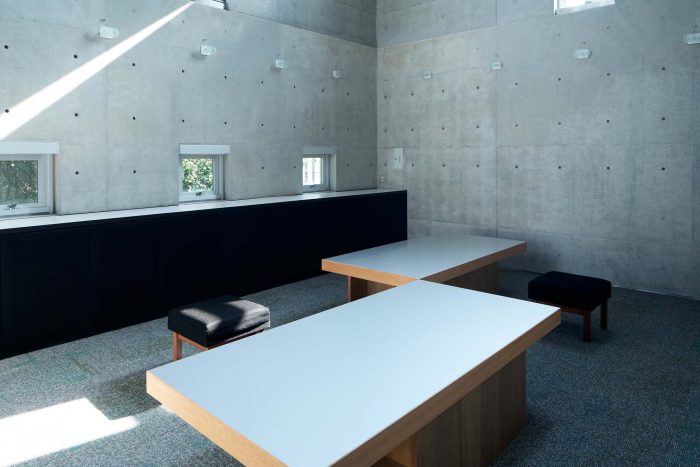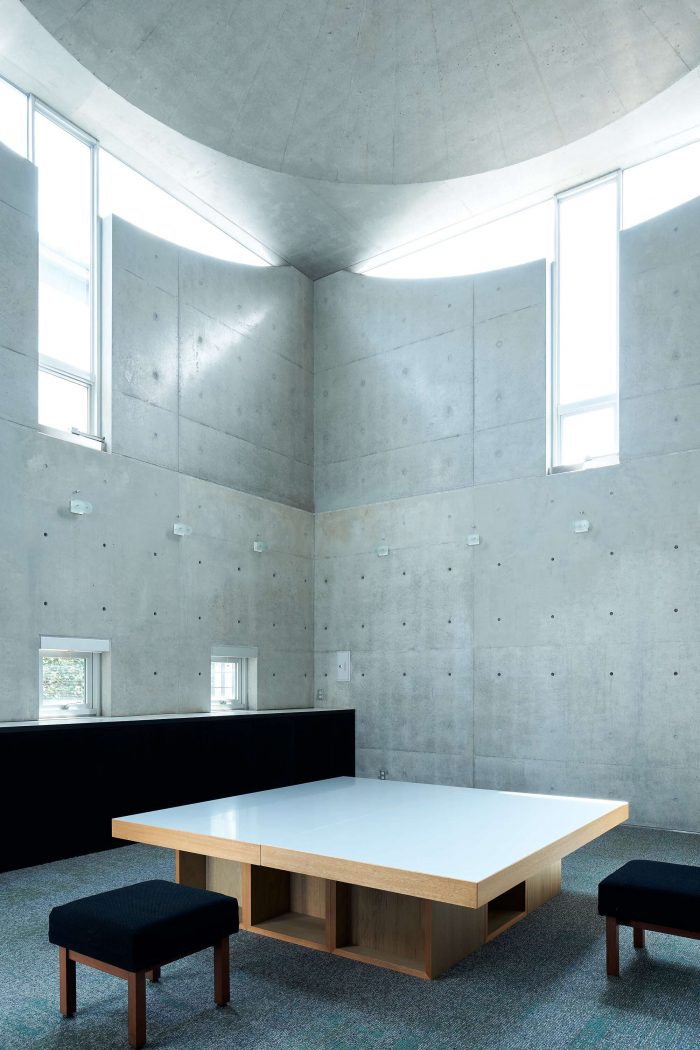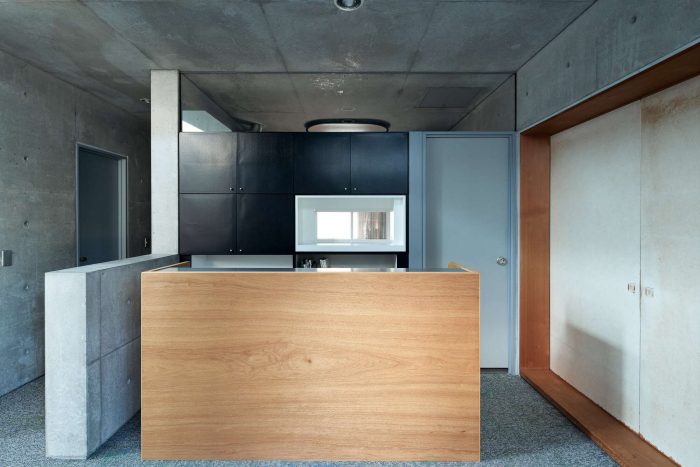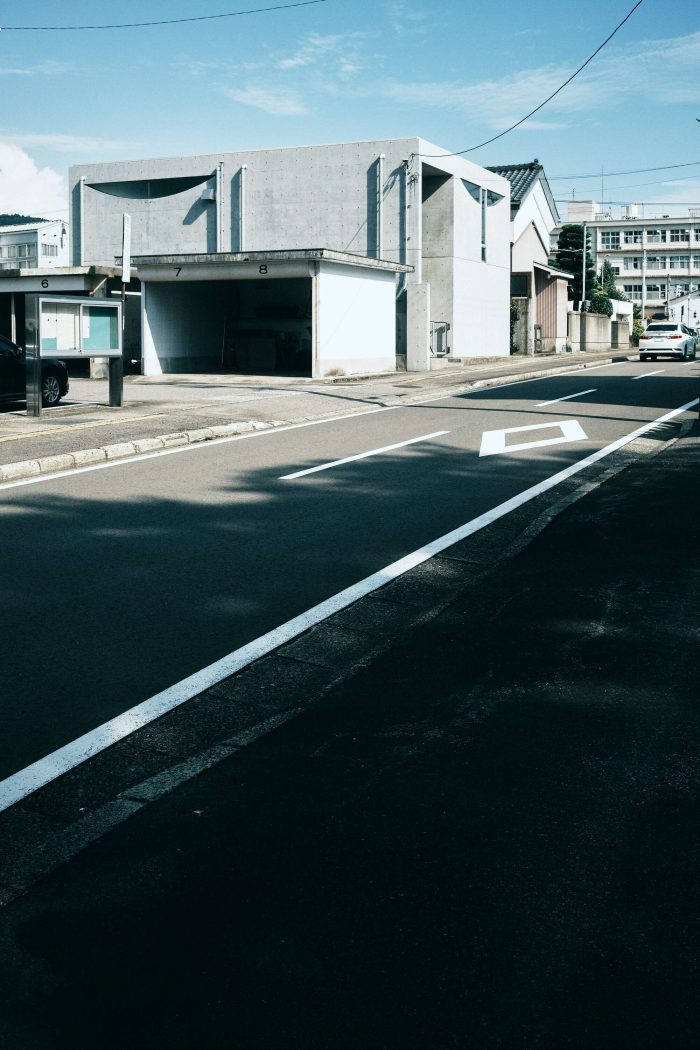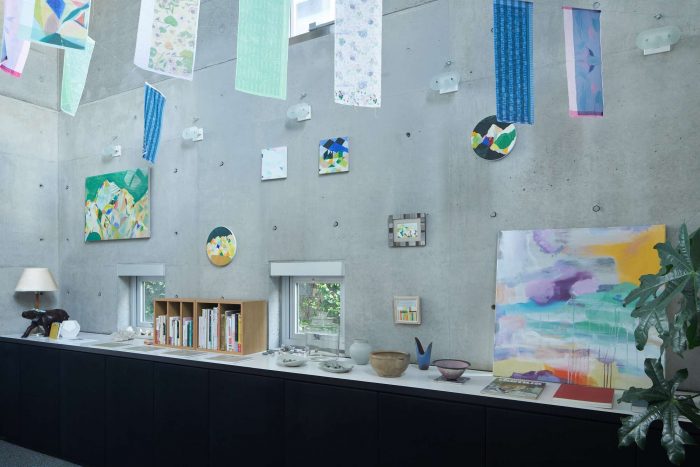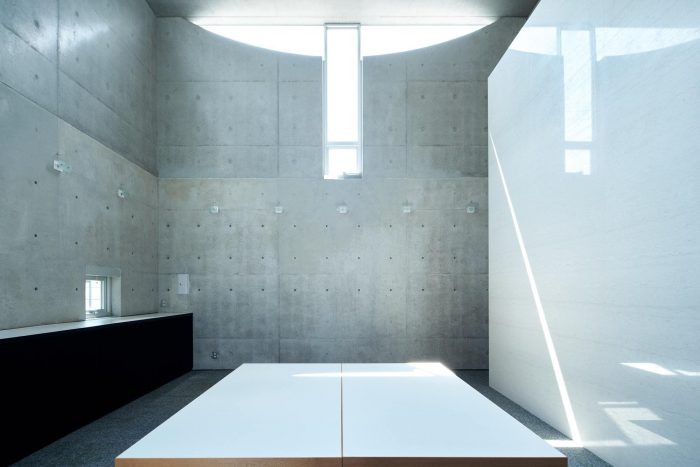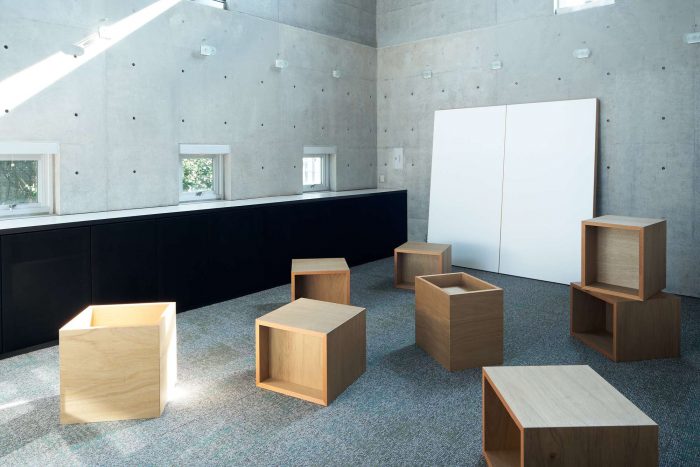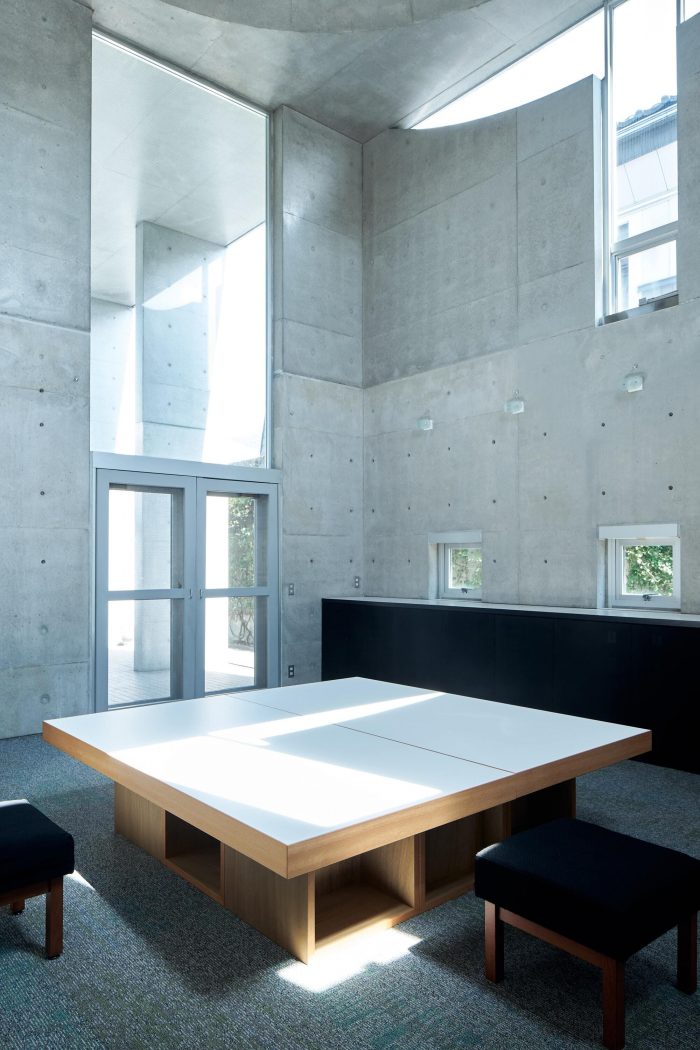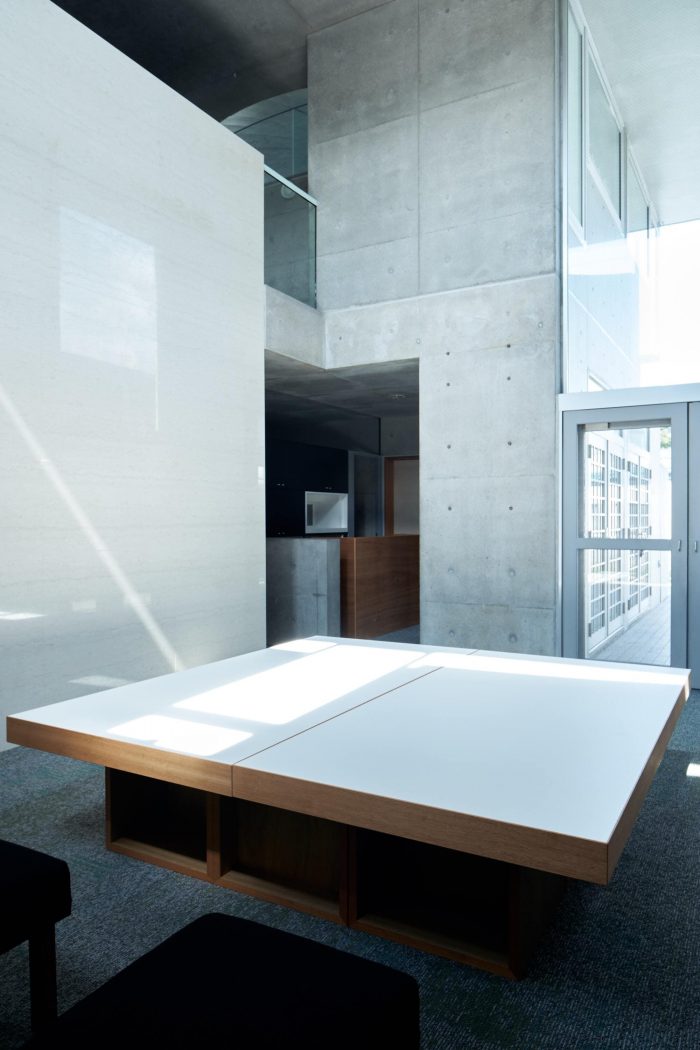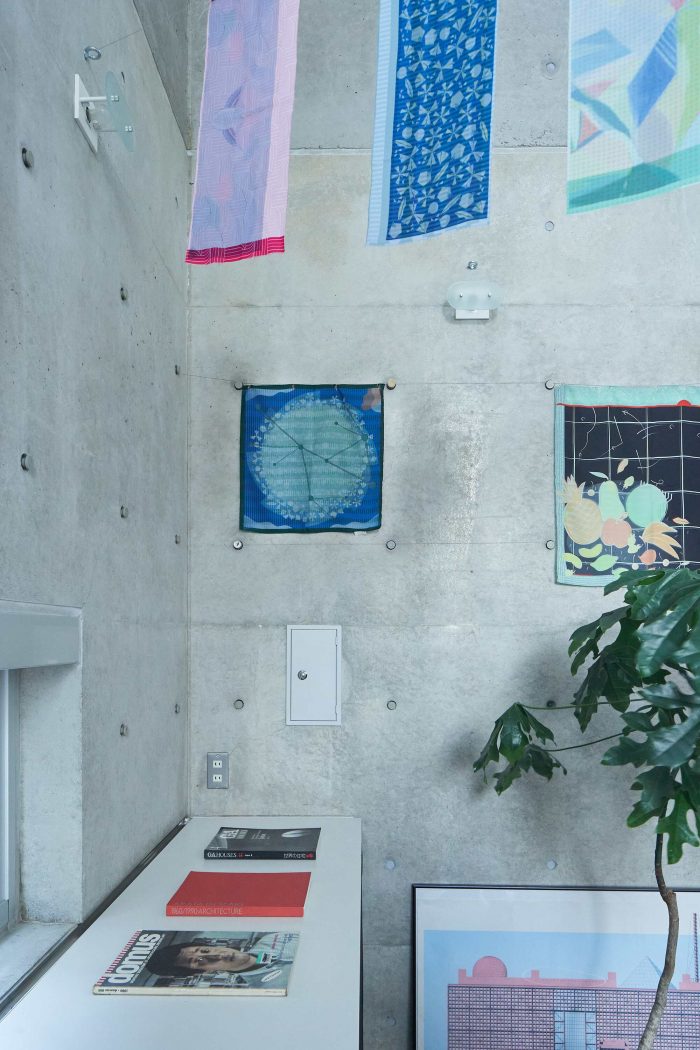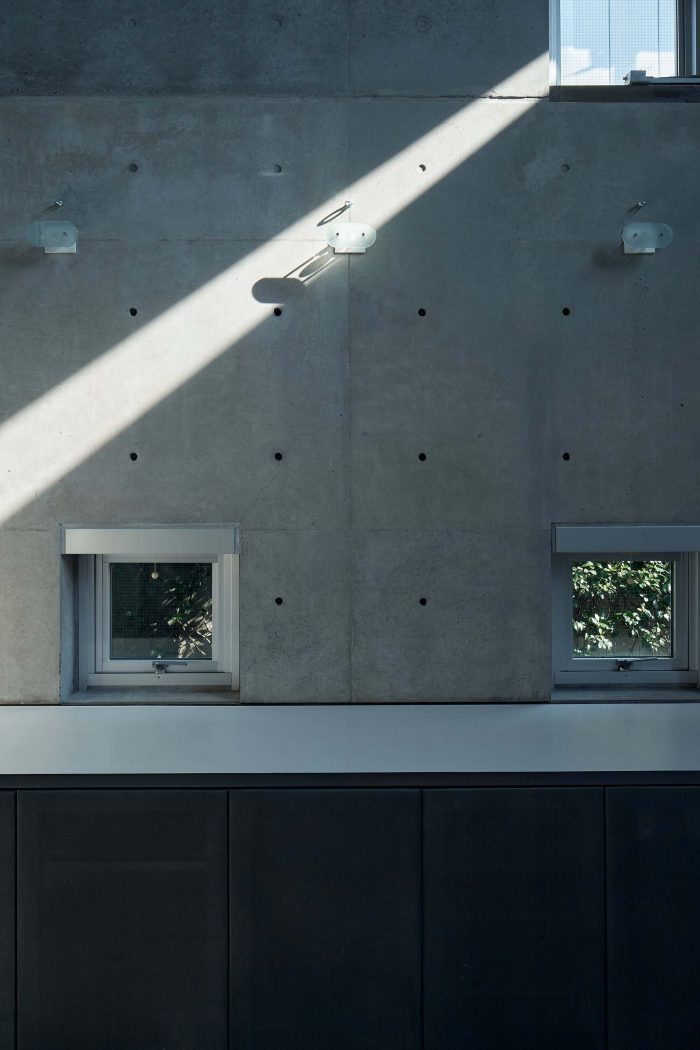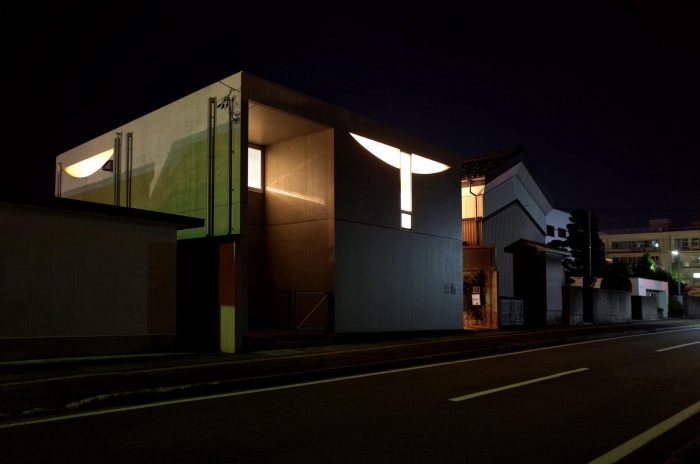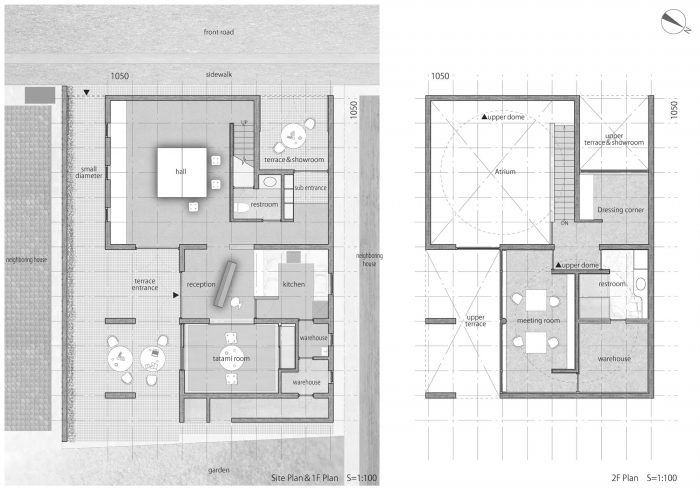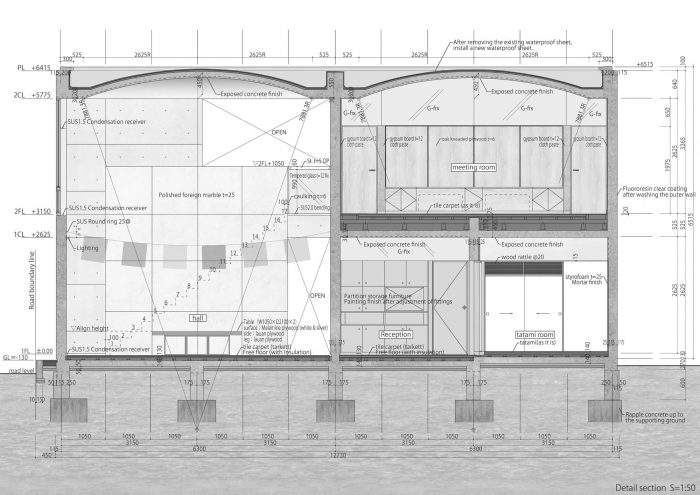Nimbus是一家位于福井县胜山市的围巾和生活方式商店。这座建筑最初是由Arata Isozaki在1985年设计的房子。这一次,该建筑被翻新成一家商店。裸露的混凝土框架(1050mm的网格和天花板圆顶)与现有矶崎建筑的强烈形式感被比喻为 “天堂”,而人们在其下的活动被比喻为 “大地”。
Nimbus is a scarf and lifestyle shop located in Katsuyama City, Fukui Prefecture. This building was originally a house designed by Arata Isozaki in 1985. This time, the building was renovated into a store. The exposed concrete frame (1050mm grid and ceiling dome) with the strong formality of the existing Isozaki architecture is likened to “heaven”, and the activities of people under it are likened to “earth”.
其目的是创造一个灵活的产品展示,具有柔软的变化性,如围巾和杂项商品像云一样漂浮在天堂和大地之间。(可以重新组合的大桌子,墙上挂线的圆环)我们正在调整表面,使现有的框架和围巾等产品共存,如重新粉刷现有的固定装置柜台,重新铺设地板,整理新的固定装置。
The intention was to create a flexible product display with soft variabilities, such as scarves and miscellaneous goods floating between heaven and earth like clouds. (Large table that can be recombined, round rings on the wall for hanging wires) We are tuning the surface so that the existing frame and products such as scarves coexist, such as repainting the existing fixture counter, reupholstering the floor, and finishing new fixtures.
主要的表面调整。
固定装置的尺寸被设定为1050网格的副本,该网格也被用于暴露的镶板。
桌面表面使用了白色和银色的三聚氰胺饰面,以突出围巾和混凝土框架。
我们在人们可以触摸到它、坐在它上面或感受到物理尺度的地方使用了容易随时间恶化的月桂木贴面。
Main surface tuning:
The fixture dimensions were set as a copy of the 1050 grid that was also used for the exposed paneling.
White and silver veneers of melamine are used on the surface of the tabletop to highlight both the scarf and the concrete frame.
We used lauan veneer, which easily deteriorates over time, in places where people can touch it, sit on it, or feel a sense of physical scale.
在坚硬的灰色混凝土墙和柔软的瓷砖地毯地板之间的柜台门,使用了调和冲突纹理的扬声器纱布,并被设置为面对站在对面的大理石墙的纹理。
在被混凝土墙包围的大厅里,铺设了类似于苔藓花园的柔软的瓷砖地毯,灰色的材料使纱布显得非常突出。
附着在墙上的一些圆环被设置为拉伸电线的装置,使围巾和其他东西跳舞。
通过对表面的调整,一个硬性和软性共存的建筑诞生了。
The counter door between the hard gray concrete wall and the soft tile carpet floor uses a speaker saran that mediates conflicting textures and is set to face the texture of the marble wall standing opposite.
In the hall surrounded by concrete walls, a soft moss-garden-like tile carpet is laid, and the gray material makes the scarf stand out.
A number of round rings attached to the wall is set up as a device to stretch wires and make scarves and other things dance.
Through the tuning of the surface, an architecture where hardness and softness coexist was born.
Architects: Fukui University of Technology, LoHA
Area : 155 m²
Year : 2022
Photographs :Kyohei Noda
Manufacturers : Aica Kogyo Company, SK Kaken, Sanwa, Tarkett, Toli, Union Corporation Japan
Lead Architects : Hiroshi Yamada, Toshitaka Shimizu
Furniture Making : Yusuke Futakuchi
Construction : Tatsuya Mizukami
City : Katsuyama
Country : Japan

